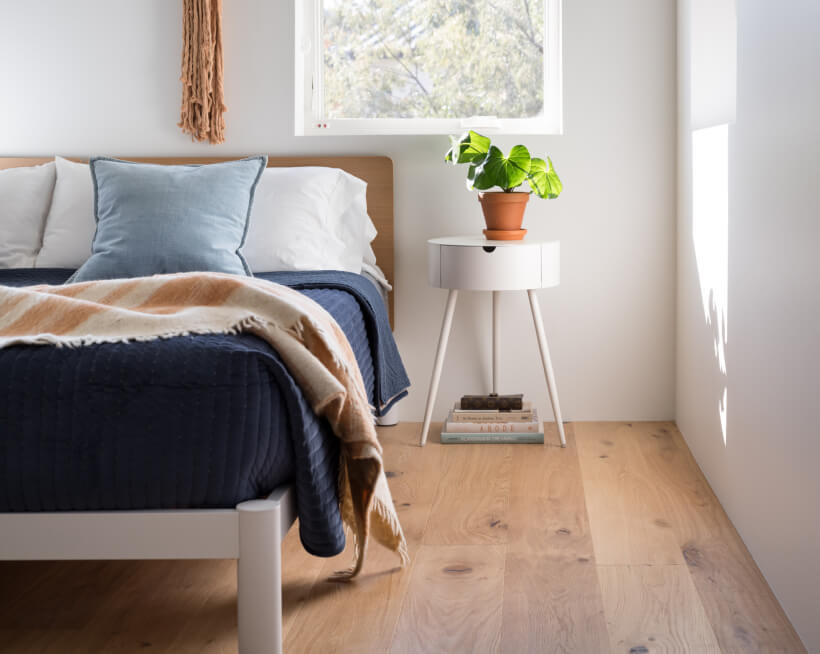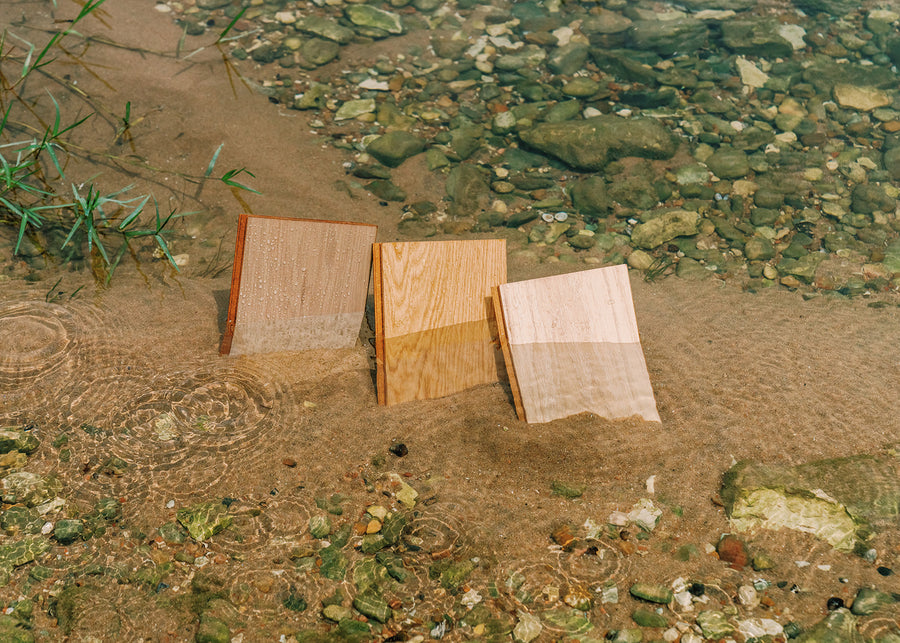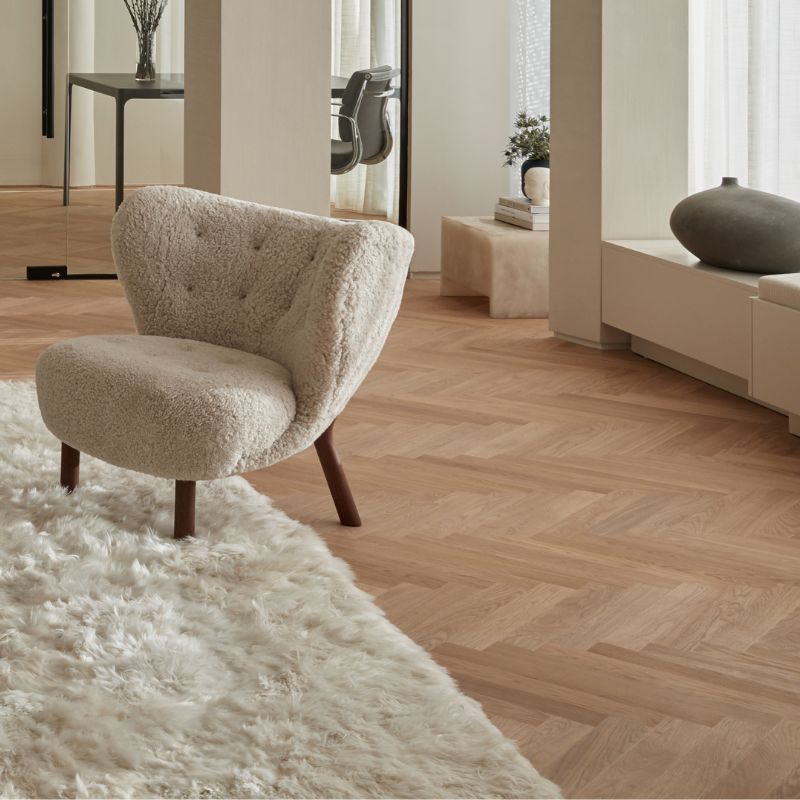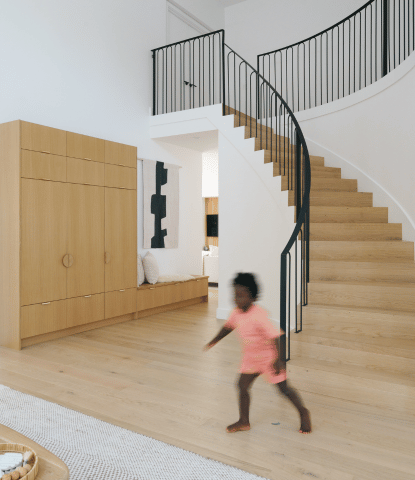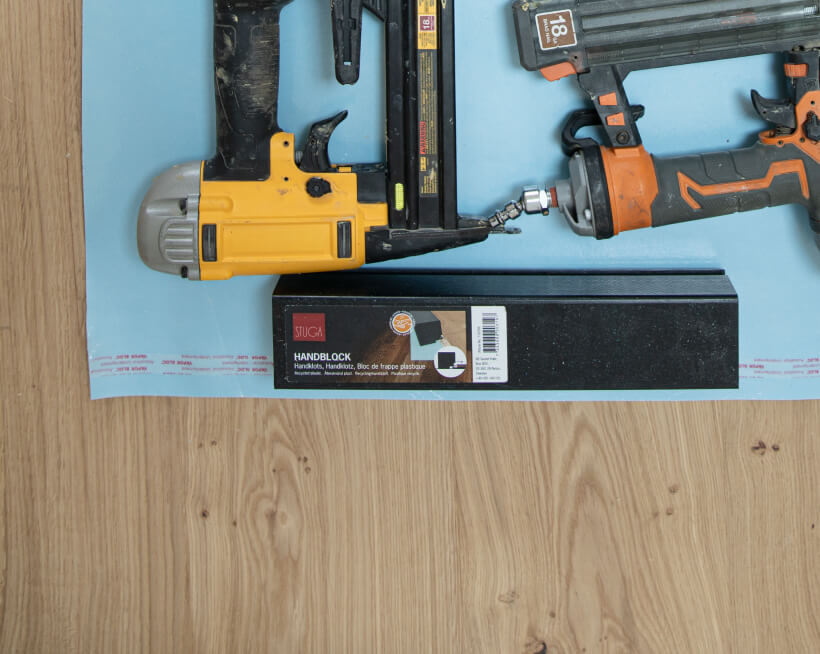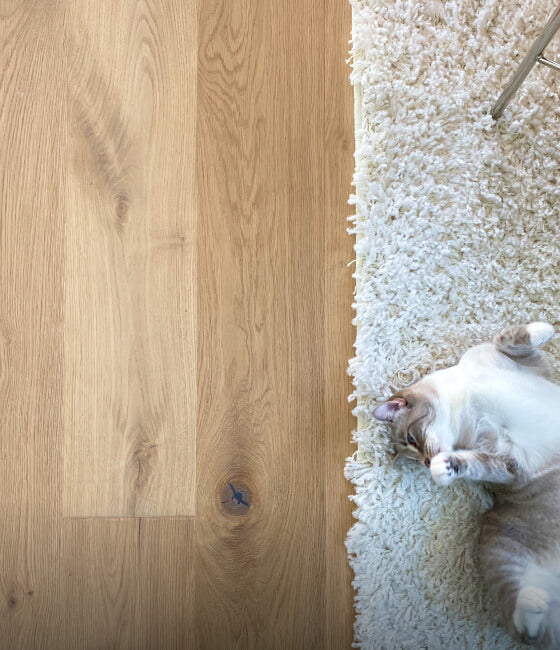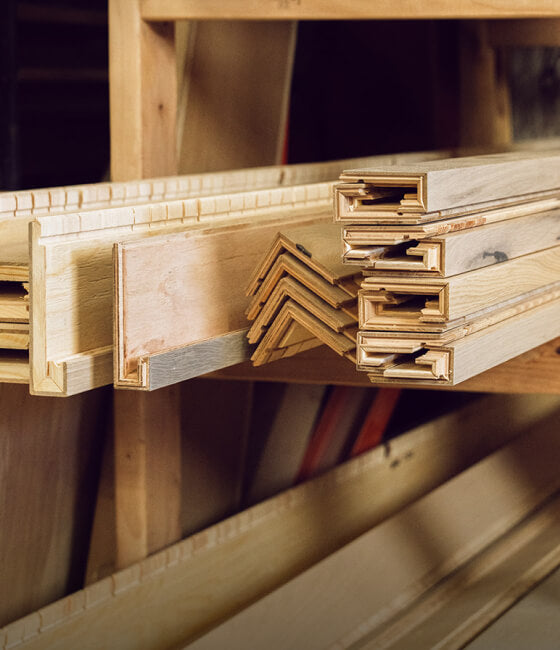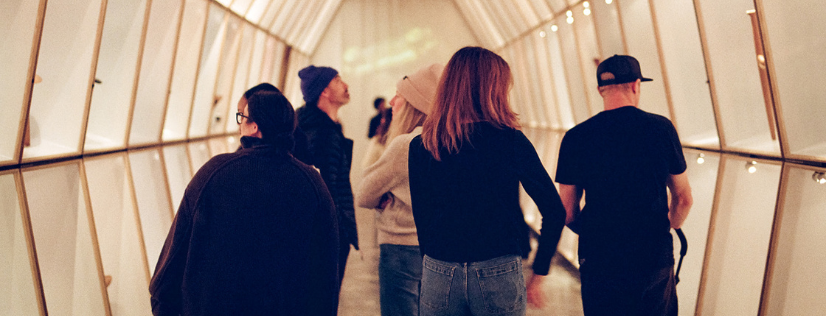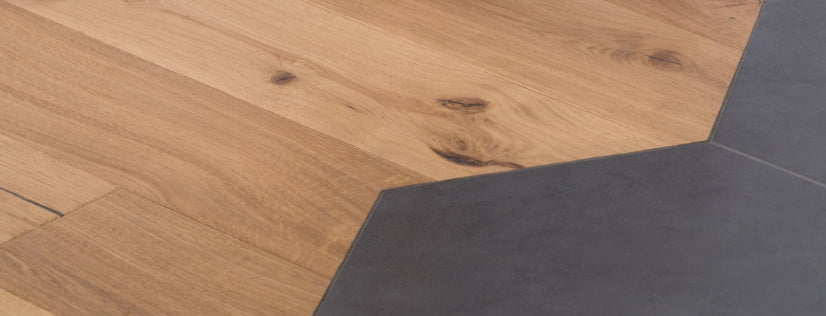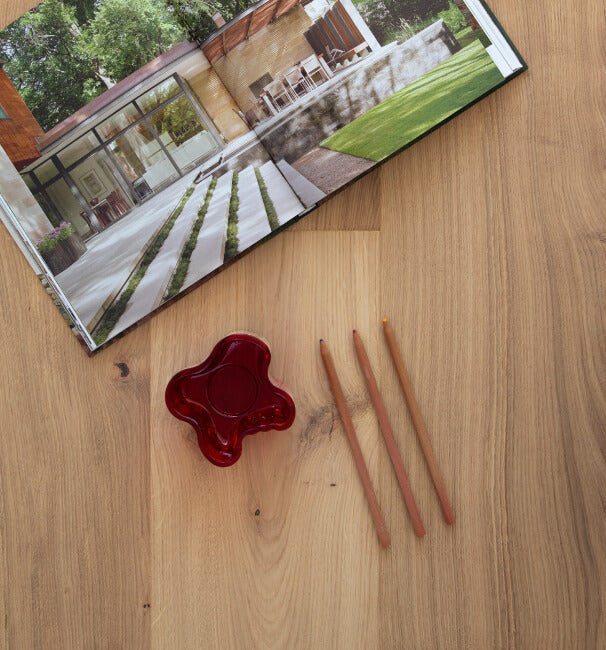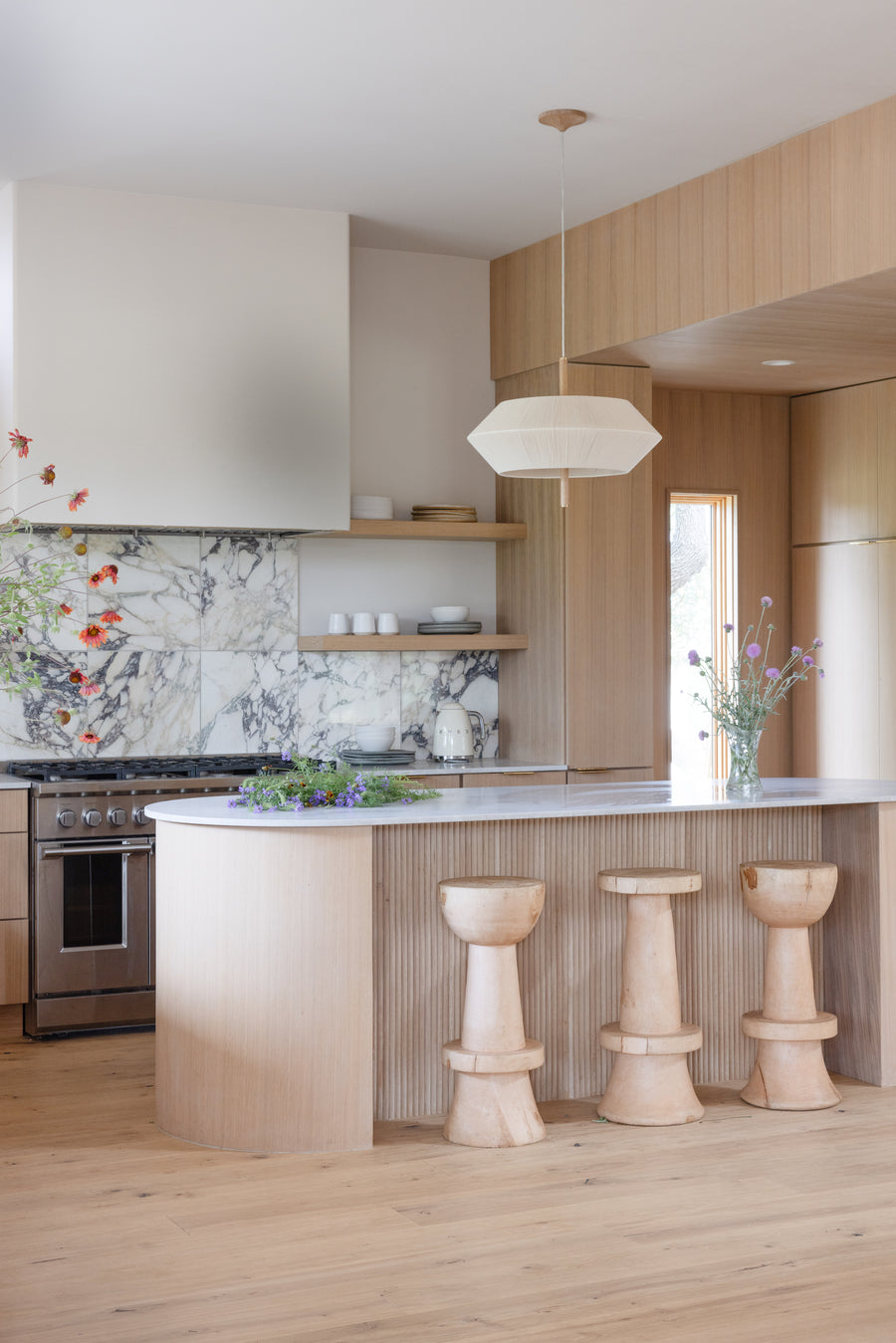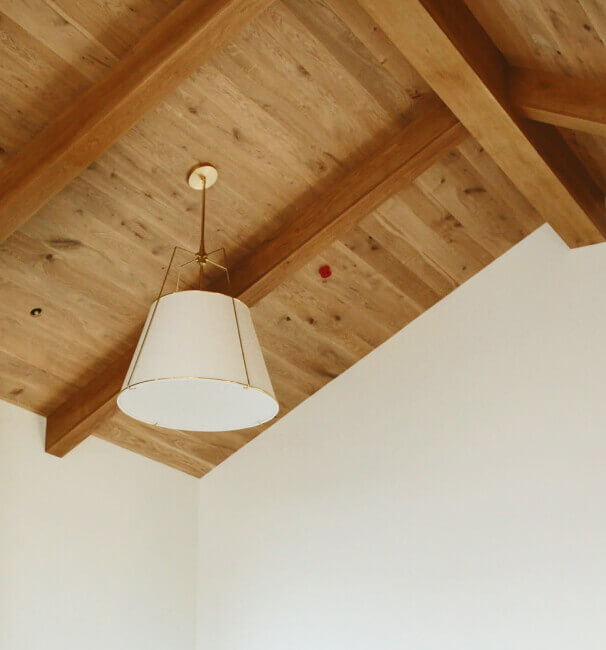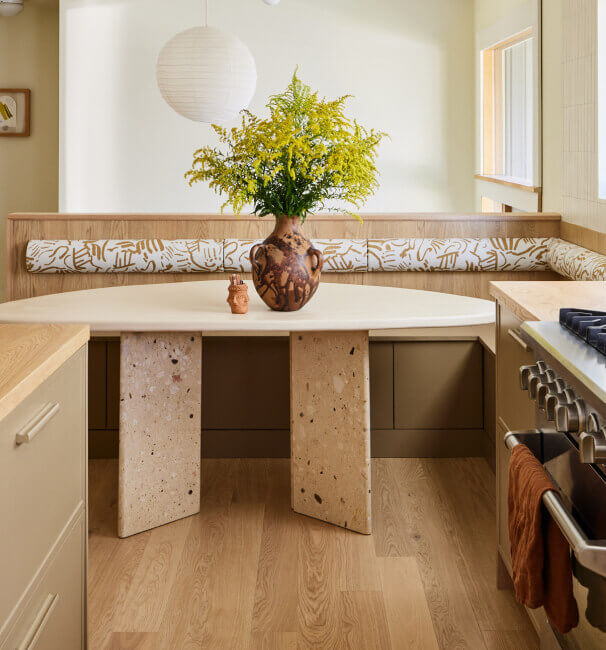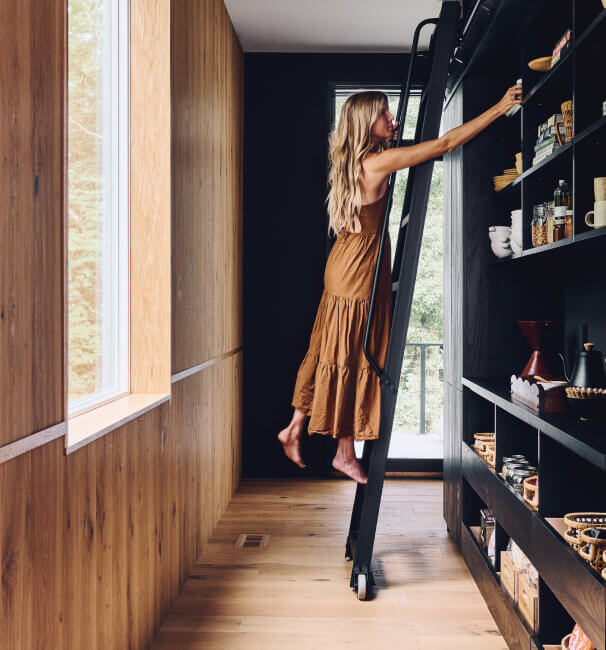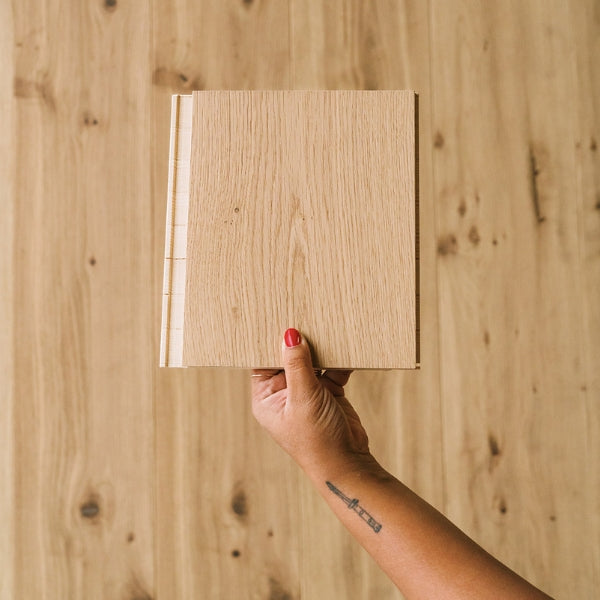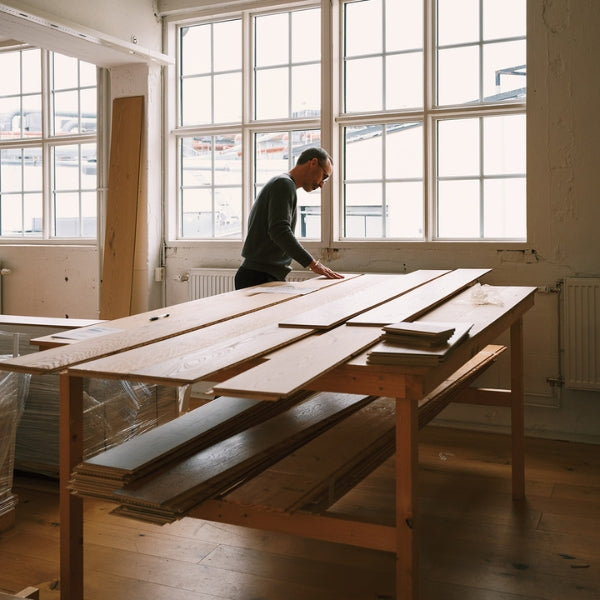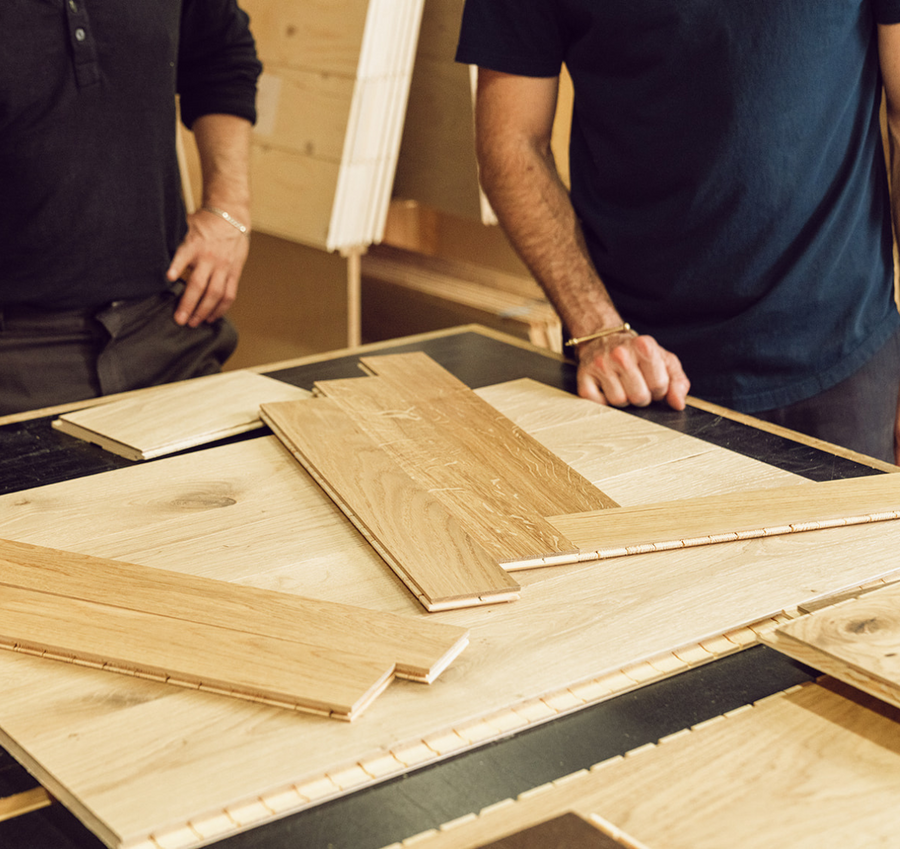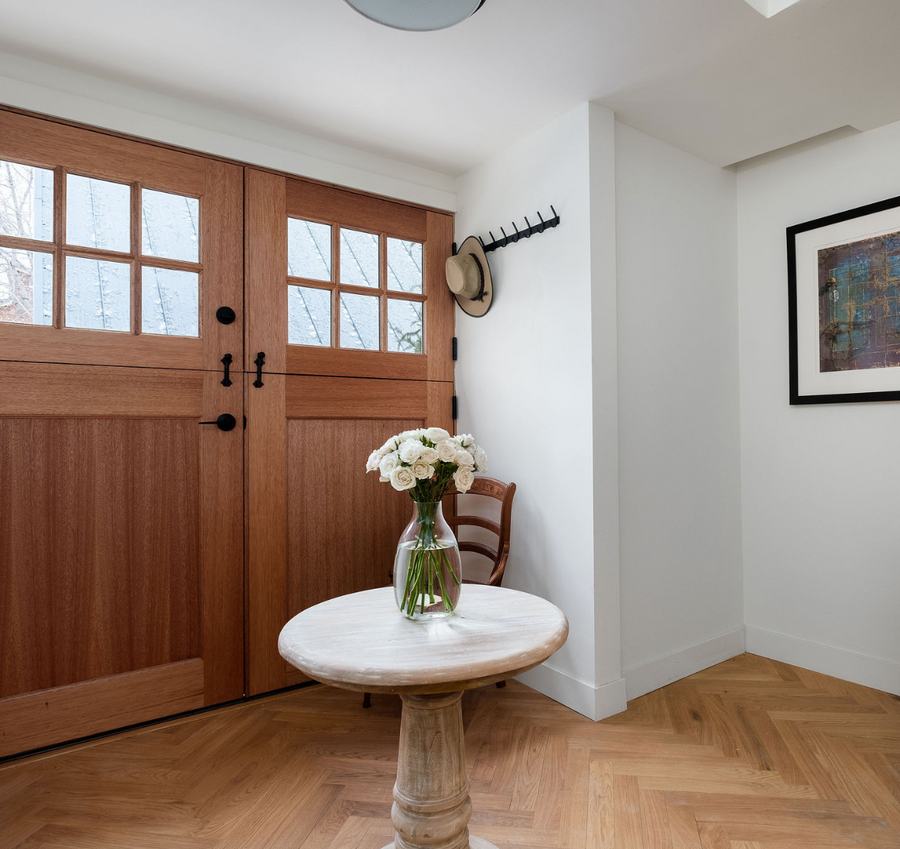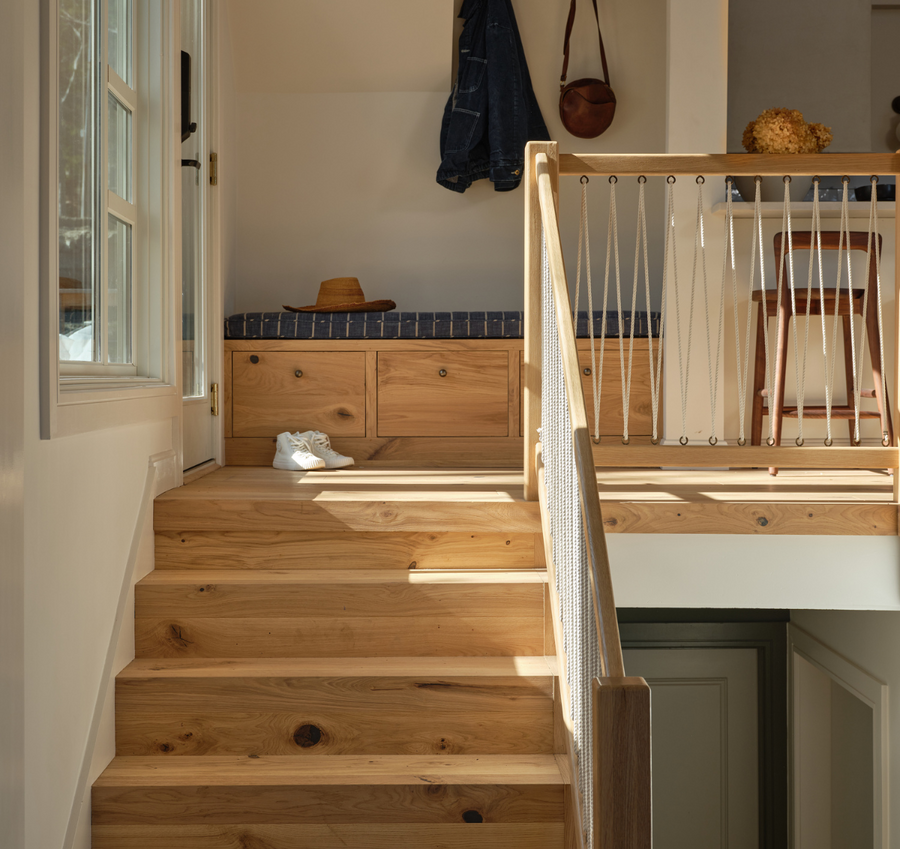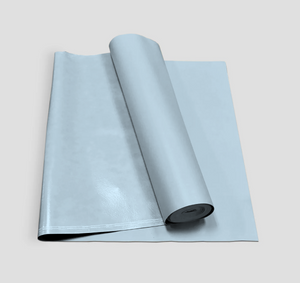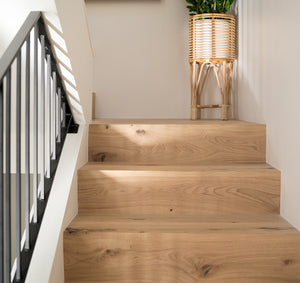April 03, 2024
Meet Preferred Installer BJ Brown
by Lauren Jones
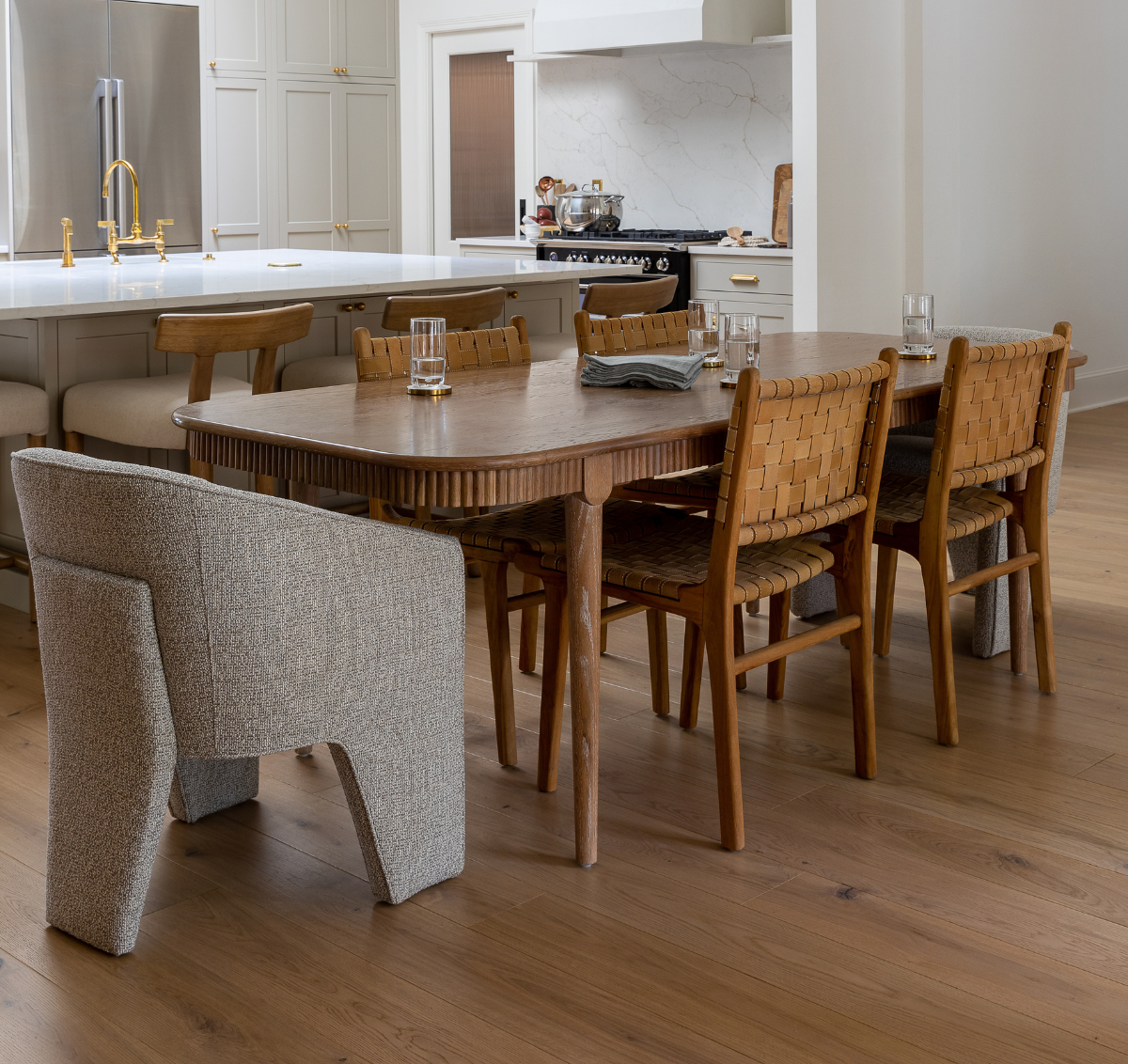
BJ Brown, a Texas native, has been a staple in the Austin woodworking community for the last decade. He runs Ingrained by Nature and is one of our go-to installers for local projects. We sat down with him to learn more about his business, plus some of his favorite Stuga projects.
Planning a renovation or just curious about where to start when it comes to hiring an installer? BJ answers all.
 BJ Brown, Owner of Ingrained by Nature
BJ Brown, Owner of Ingrained by Nature
How did you get started in the industry?
I got introduced to wood flooring when I started working for a wood floor manufacturing company doing business development. I fell in love with all things wood floors and knew that it was something I could do.
Do you only do projects in Central Texas?
I’ve lived in Central Texas for 25 years, Austin for 20. I’ve done projects in San Antonio, Dallas, Houston, the Hill Country, and even out in West Texas. I’ve been asked to expand outside Texas but haven’t yet.
Should Texas homeowners be aware of any considerations when it comes to humidity and their flooring?
Most of the questions I get about climate are related to humidity. Super high humidity in the summers can expand wood and very low humidity like with recent Arctic cold fronts we have experienced the last three winters can cause wood to contract and create gaps.
With Stuga’s unique locking system, we typically don’t get any gaps even with atypically humid or arid weather. An indoor humidity range of 30%-65% is best to ensure the performance of your flooring.
Have you noticed any trends lately?
People are wanting a natural, really light wood with a raw look and feel. Previously, people were learning toward more gray-toned floors, which was pretty, but natural oak is more timeless.

Gilberto, a member of BJ's crew, installs our Flush Stair Nosings in Shell.
What is your favorite Stuga floor, and why?
>I like the texture, color, and finish of Shell. It’s a nice, natural floor that feels good on bare feet. I appreciate the oiled finish and how it patinas. Plus, oiled floors hide scratches more easily than, say, a floor with an acrylic finish. Stuga Founder Marc Bacher has Shell in his Austin home, and it still looks perfect, despite living with his 90-pound lab, Lenny. Some customers have a maintenance fear with an oiled floor, but I try to help them overcome it.
Our floors have a locking mechanism unlike traditional tongue-and-groove. How is that to install?
The locking mechanism was a learning curve at first, but now it’s just as easy. Traditional tongue-and-groove is 99 percent of what we deal with in our industry and is often what we see in homes.
One thing I like about the locking mechanism is that you don’t have to worry about seasonal gapping. With tongue-and-groove, no matter how you install the wood, it will expand and contract with the weather. Once the locking system clicks into place, you know for a fact it’s installed, and there will be no gaps.
How does the construction of Stuga floors differ from other hardwood floors?
When I’m first showing customers the floors, they definitely think they are different from other floors they’ve seen. They’re most likely used to seeing a plywood substrate, so moving to a three-layer floor looks and feels different. I like to educate customers on why. It’s really easy to use plywood, but with a three-layer floor, you get an eco-friendly, highly stable floor, engineered with ingenuity. From there, the light bulb goes off.

Old Town herringbone planks lay on top of a large Drift sample at the Stuga sample shop in Austin, Texas.
What are the most common installation methods?
I most often glue and staple. If I were on a slab, I’d glue right on the slab. Personally, I don’t like to float a floor. I don't like the way it sounds. It’s a very hollow sound and can move up and down. With gluing or stapling, both the customers and I have peace of mind that they won’t need any repairs.
Do Stuga floors take longer to install than other floors?
The typical installation time in a 2,000-square-foot home is 6-8 working days with a team of two. While there was a learning curve at the beginning with the locking mechanism, it now takes the same amount of time.
Do you enjoy installing stair nosings?
I love the stair nosings that Stuga provides. I don’t buy nosings from any other vendors because they’re never the same texture, sheen, or tone. Often, they’re taking solid oak moldings, and it looks cheesy and cheap. It’s offensive when I go into an expensive home and see bad stairs.

Flush Stair Nosings in Shell, installed by BJ's team.
Why is floor prep important?
Floor prep is important to get the subfloor nice and flat. In terms of cost, my team and I typically allow an estimate of $3,000 as a good placeholder number, but we won’t have a set number until we get in the space. Sometimes customers try to do floor prep themselves. Anything they can do before helps, like pulling up carpet or tile, but we’ll also go in as well.
What are your favorite things about living in Austin?
I have always loved how relaxed and laid back Austin is and how active the city is. No matter what day or time of day, you can always find people enjoying the lakes, the trails and the parks, especially Zilker Park and Barton Springs pool. We are also spoiled with an abundant amount of great food and drinking establishments.
Fun Facts
- Went to Texas State University
- Married for 14 years. Wife Jen works in the foster/adoption community
- Loves to ski
- Has a dog named Barkley, Boston Terrier/Frenchie
- Born in Texas and spent elementary years in Colorado, junior high years in California, and then high school back in Texas
- Got into woodturning on a lathe machine from an old neighbor who has since passed. Makes wood bowls and jewelry
